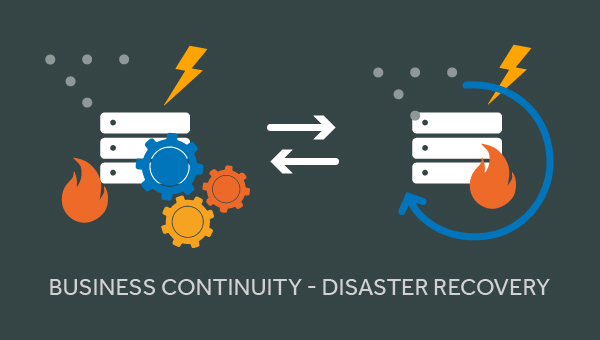Technology advancements have progressively made day-to-day business operations much more streamlined and simple. The use of software, computers, and the internet is an everyday task that your business may not put much thought into. Until the dreaded day happens when a system goes down. Whether it’s the office internet that goes down, email isn’t working or no one in the office can access the file shares. Does your business have a plan for these situations?
Planning for system outages or failures only scrapes the surface. Other risks such as extended power outages, cyber-attacks, natural disasters (floods, fires, earthquakes), and even human error have the potential to bring a business to a grinding halt.
“By Failing to prepare, you are preparing to fail.” – Benjamin Franklin
Every day your business is threatened by scenarios like these. At King Tech, we can help your business plan for these events to mitigate or recover from any disaster scenario.
Let's Connect and Plan Together!
There are two main plans your business should have in place. A Business Continuity Plan and a Disaster Recovery Plan. Below lists the differences and the overlaps between both plans.
Business Continuity Plan (BCP)
- Like the adage says, “proper planning prevents poor performance” a solid business continuity plan should prevent long downtimes in the event of a disaster.
- Risks such as cyber-attacks, natural disasters (ie: floods, fire, earthquakes), and human error are covered by a BCP.
- The BCP outlines the necessary steps in place to keep a business operational and to serve its customers.
- BCP is proactive for example having a secondary off-site location with internet for workers to go to in the event of a disaster.
Disaster Recovery Plan (DRP)
- Is the process of handling and mitigating further damage due to a natural disaster, human error, or power outage.
- In a DRP there will be recovery time objectives that outline a timeline for an activity, service, or product to become available or completed.
- Disaster Recovery Plan is part of the Business Continuity Plan.
- DRP’s goal is to restore business operations and systems quickly and efficiently following a disaster.
BCP & DRP? Which Do I Need?
While there are differences between a BCP & DRP they do overlap and DRP is part of a good BCP.
What makes a good BCP? There are certain elements any good BCP should contain. The Citrix article linked here does a great job of listing those elements and explaining the importance of each element. The 7 key parts of a BCP according to Citrix are:
- A Clearly Defined Team
- A Detailed Plan
- Effective Testing
- Crisis Communication
- Employee Safety
- Uninterrupted Access To Business Resources
- Continuous IT Operations
What are some elements that should be included in a DRP? Cloudian does a great job of laying out what should be included in a DRP in the linked article. Here are some elements they think should be included in a DRP.
- Recovery Time Objective & Recovery Point Objective
- Hardware and Software Inventory
- Identify Personnel Roles
- List of Disaster Recovery Sites
- Remote Storage of Physical Documents & Storage Media
- Disaster Response Procedures
- Identify Sensitive Data
The importance of both plans boils down to business impact analysis (BIA). In the event of an outage, cyber-attack, natural disaster, or any other event what is the impact on the business, and how does it affect the financial viability of the company? Solid BCP & DRP answer all these questions and reduces the impact an event would have on a company mitigating downtime and financial loss.
